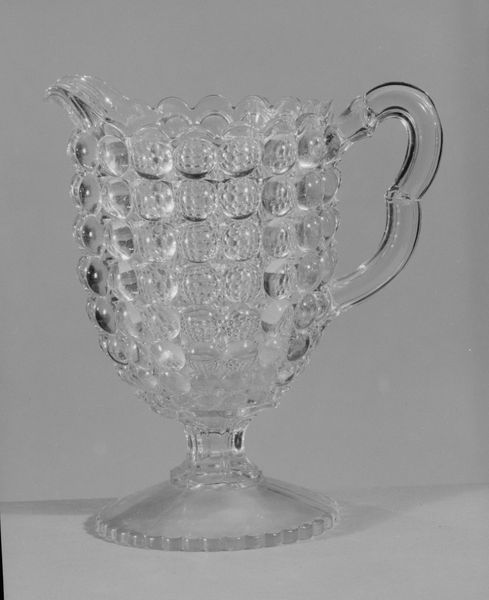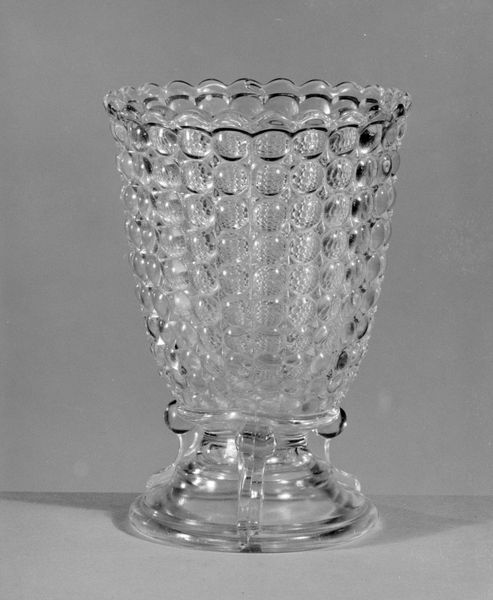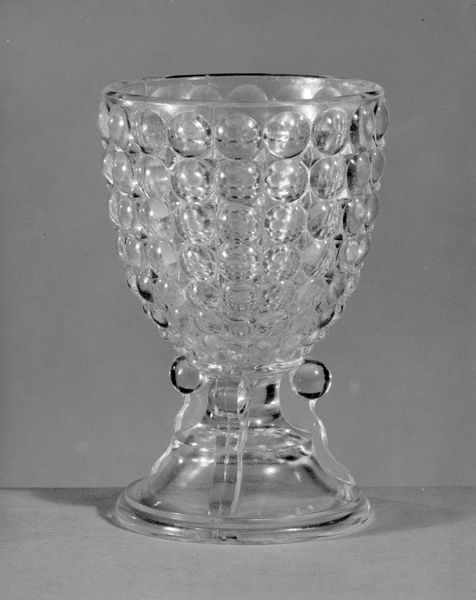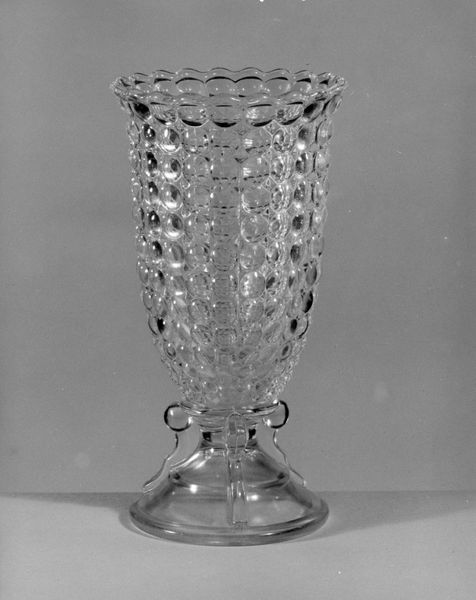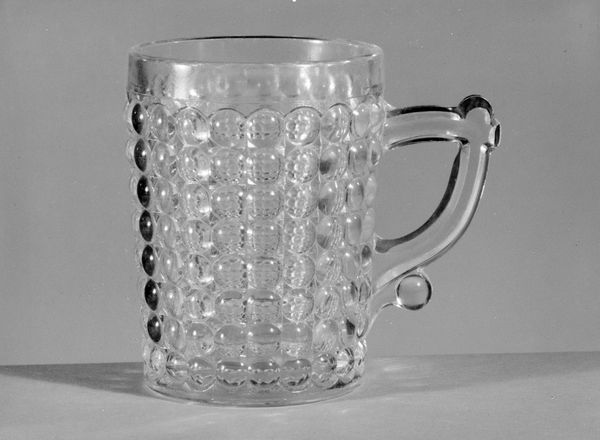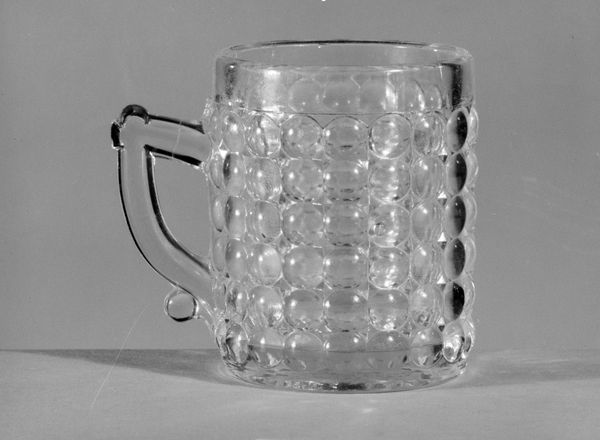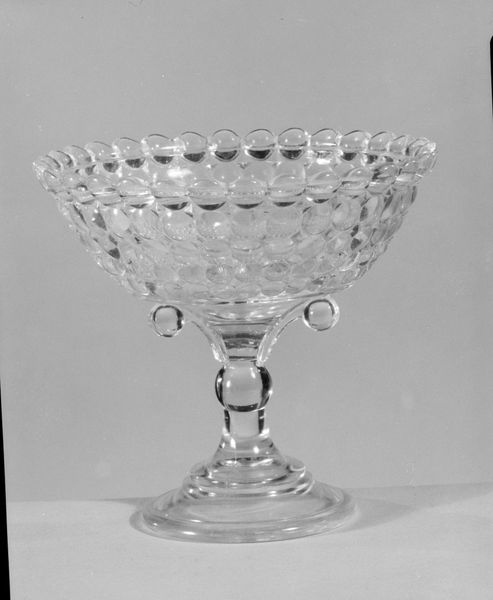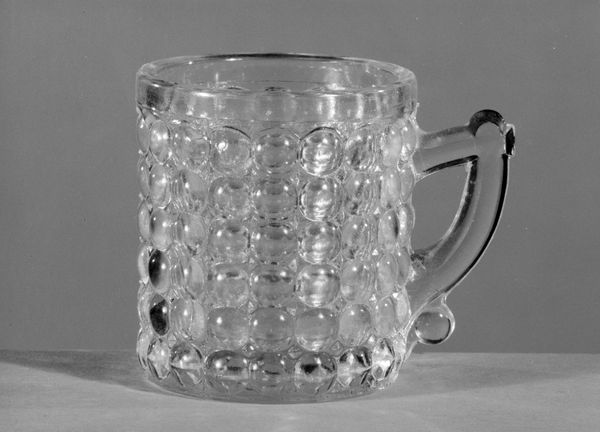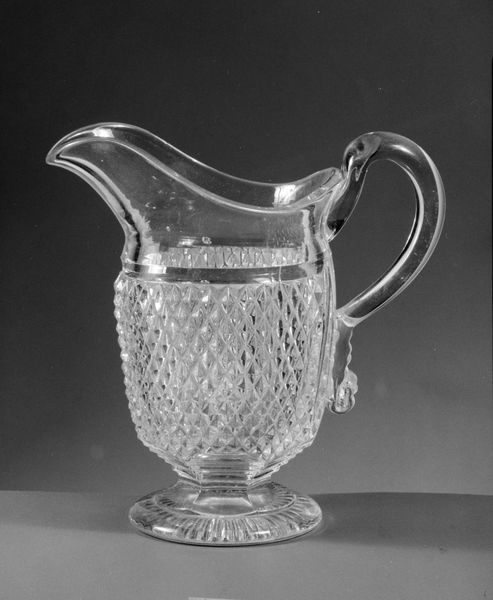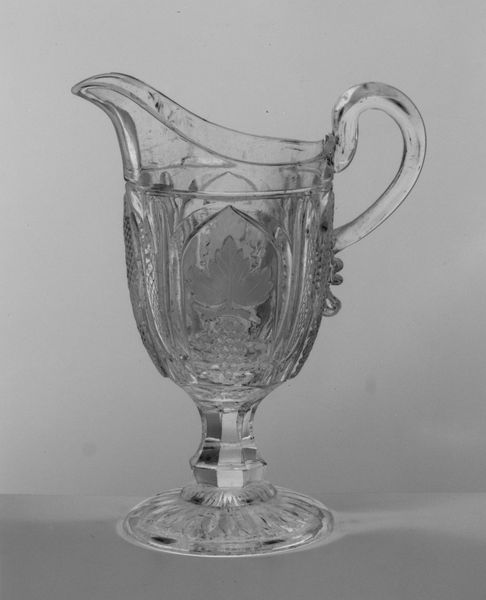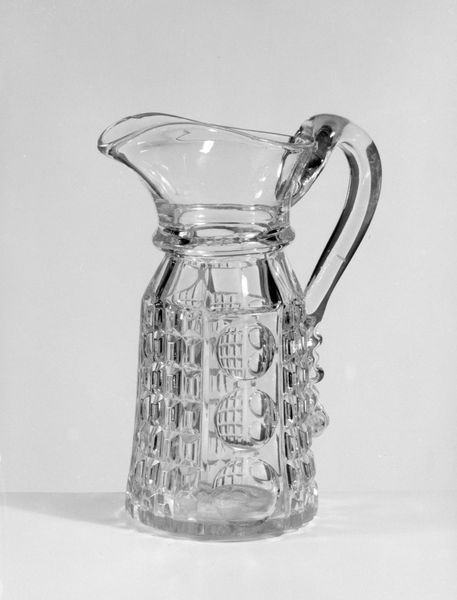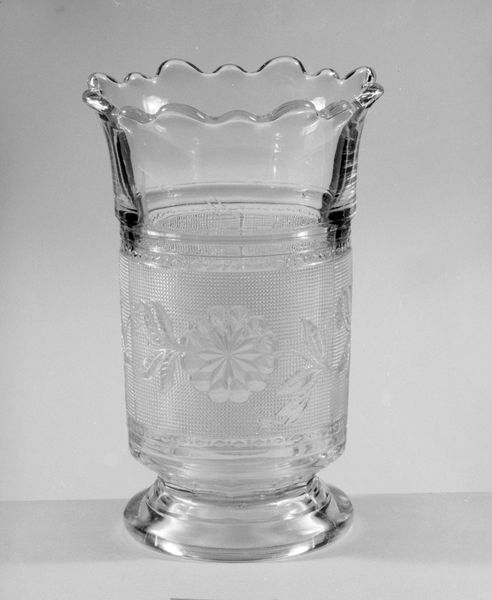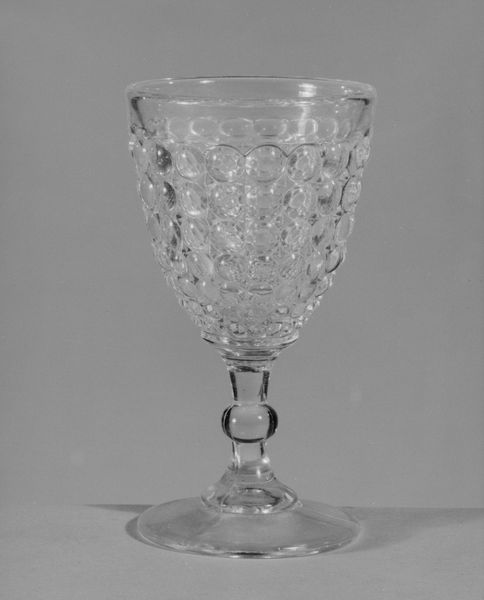
photography, glass
#
photography
#
glass
#
united-states
#
macro photography
Dimensions: H. 8 in. (20.3 cm)
Copyright: Public Domain
Editor: Here we have an exquisite piece of glasswork, "Milk Pitcher," crafted between 1870 and 1890 by Adams and Company. Currently residing at the Metropolitan Museum of Art, it strikes me with its tactile bubbled surface. What design elements particularly capture your attention in this work? Curator: Focusing on the visual vocabulary, note the interplay of transparency and texture. The uniform distribution of raised spherical elements across the pitcher’s body creates a complex field. Observe how light interacts with this field; each sphere acts as a tiny lens, distorting and refracting the light, thereby complicating our perception of the vessel's interior. Do you see how this manipulation affects the object's visual weight? Editor: Yes, I see it now! The texture creates a visual density despite the transparency of the glass. It seems almost heavier than it is. Curator: Precisely. Also, consider the handle and the base. These elements, while functional, are also integral to the overall composition. The handle, a clean, arcing form, provides a counterpoint to the textured body. Similarly, the stepped base grounds the piece, offering a visual anchor. Editor: So, it's a carefully constructed balance between different visual elements. It makes me appreciate it even more. Curator: Indeed. Through its meticulous formal arrangement, the “Milk Pitcher” invites contemplation on the very nature of material and perception. Editor: I'll definitely look at glassware differently now, with more focus on its materiality. Thanks so much.
Comments
No comments
Be the first to comment and join the conversation on the ultimate creative platform.
